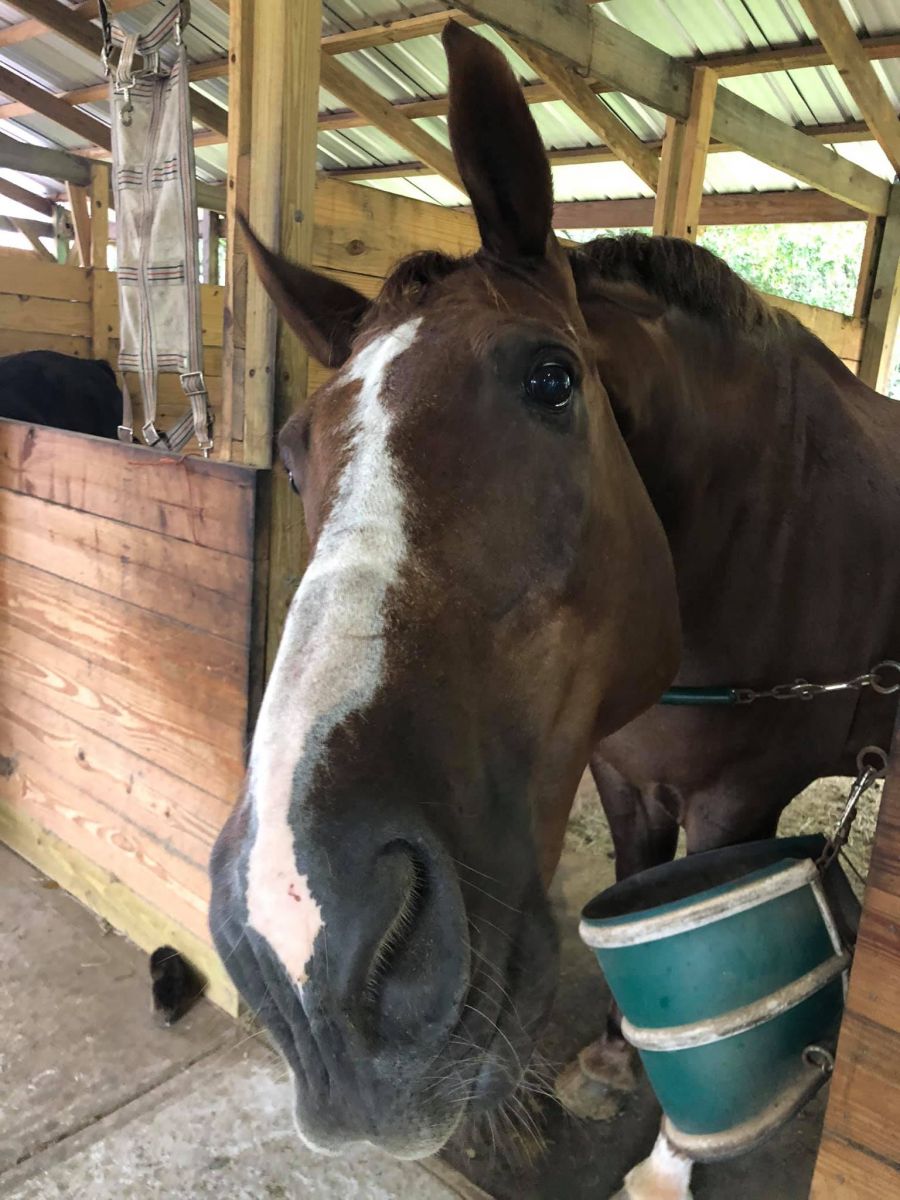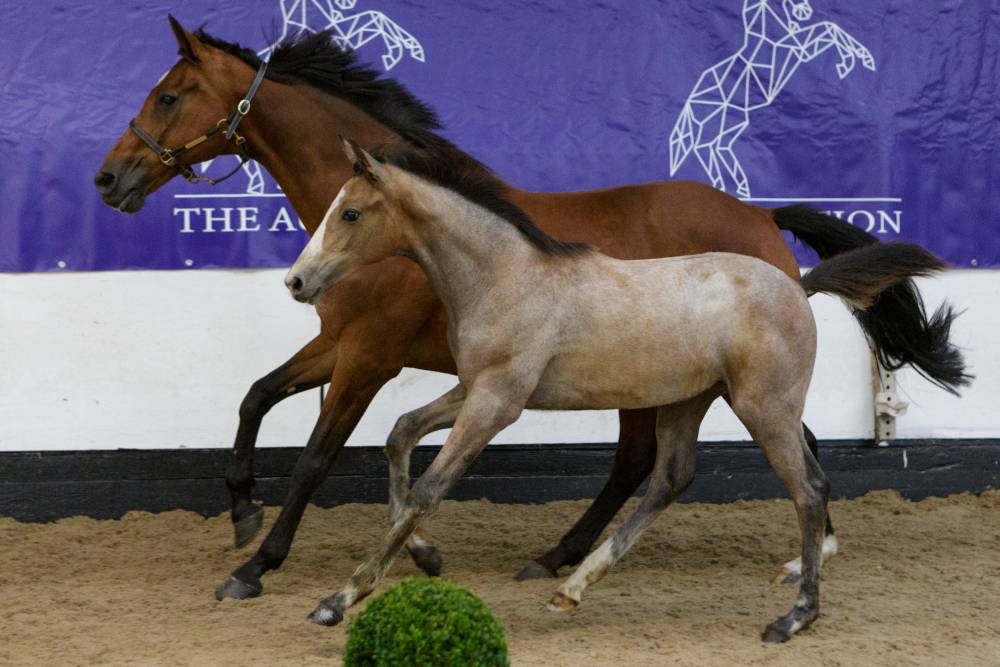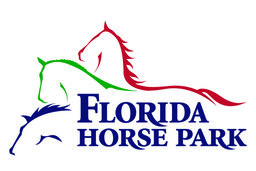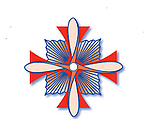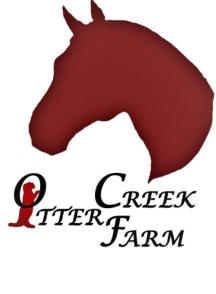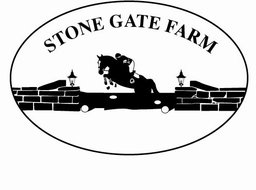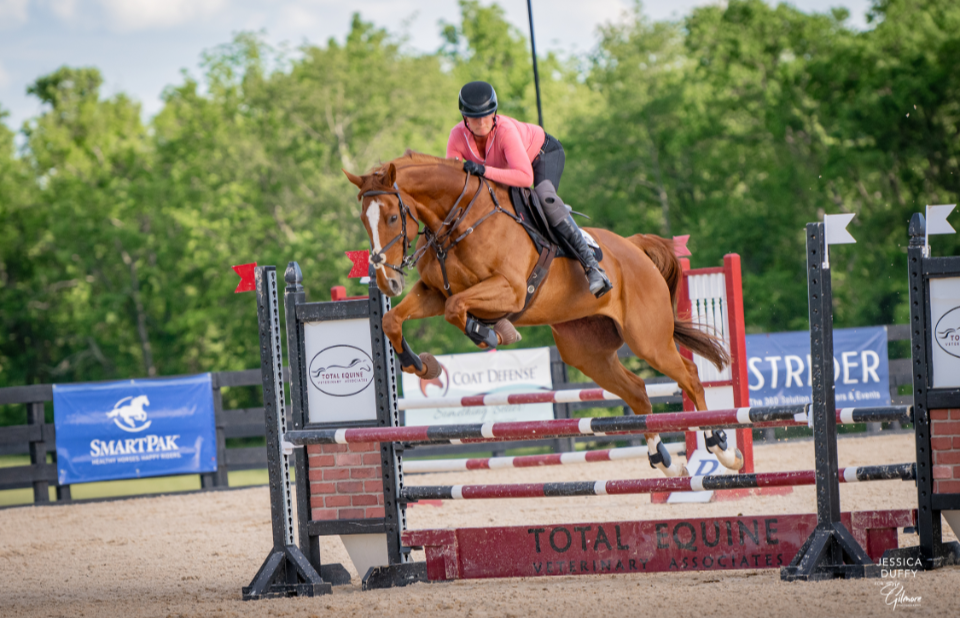In the market for a new four-legged partner? You may find your unicorn on our sister site, Sport Horse Nation. To help with the search, we’re going to feature a selection of current listings here on EN. We include the ad copy provided; click the links for videos, pricing and contact information.
Do you want a horse with the athleticism of 2020 Kentucky Derby winner Authentic? Then find a Thoroughbred. They are suited to the rigors of eventing, and cross country is simply their bread and butter. Here are six Thoroughbreds looking for their new partner on Sport Horse Nation.

Metzy. Photo via Sport Horse Nation.
Athletic, Fancy Training Level 2015 OTTB
Metzy: Five year old OTTB gelding 17.1h. He is bold, brave, and fancy. Just moved up to training level successfully. Restarted carefully and slowly. Not suitable for a kid or amateur as he is big, strong, and quirky. He shows serious upper level potential and could go very far in the right program. Located in Ocala FL. Video by request. Located in Florida.

Little Cat’s Hat. Photo via Sport Horse Nation.
2011 OTTB Dressage, Show Jump, Eventer For Sale
Little Cat’s Hat AKA as Owen is a 2011 OTTB gelding. Owen is light, uphill, and athletic with plenty of scope. Owen is easy on the flat with wins in both USDF(1st level)and USEA shows. Owen has show miles through the preliminary level but is happiest with lower level eventing. He is also competitive in the dressage ring and would excel in straight show jumping. Owen would be a great fit for competent YR or AA. Videos of YR and junior riding Owen. Located in Texas.

Good Save. Photo via Sport Horse Nation.
Amateur Friendly TB
“Good Save” aka Theo: 7 yr old, 16.2, Bay, TB, G, raced about 5 weeks ago. He had two weeks of T/O post race and was re started about 2 weeks ago. Easy to have in the barn & wants to please. Truly an old, kind soul! Straightforward to ride, more woah than go – had his first field trip off the farm this week and was the same quiet horse off the property as he is at home! Could go in any direction – amateur friendly! Priced at $4,000 but will increase as he progresses. Video and pictures available. Located in Florida.

Recurrent. Photo via Sport Horse Nation.
Experienced Novice Eventer or Dressage Prospect
Recurrent is an 11 yr old bay TB gelding, 16.2H that has competed extensively and successfully through Novice level eventing. Remi has completed 2 TNs this year and could move up to Training with a bold rider but he is happiest at Novice and would make an adult amateur / teenager very happy at that level. He is amateur friendly and has been ridden by a number of riders as he has occasionally been used for lessons. He has lovely gaits and often wins / is in top 3 in dressage. He would make a wonderful dressage prospect as well. Remi is extremely well behaved and very consistent to ride on the farm or off – whether schooling, trail riding or at shows as well as in cold weather or after having time off (I travel extensively for work). He is a very kind horse who is more than willing to please. He is uncomplicated on the flat and prefers a rider who uses lower leg for jumping. A good home is the most important factor as he is so kindhearted and appreciates attention. Serious inquiries only, no leases or trials off the farm. Located in Kentucky.

Niner’s Blaze. Photo via Sport Horse Nation.
Training Packer-Young Rider Potential!
“Niner’s Blaze” 16.1 hh 11 yo Unraced Chestnut TB Gelding
Niner is a training packer, and just finished his first Modified with his junior rider at IEA. Has been brought through the levels by a junior rider. Many top 5 placings at events in Kentucky, Florida, and surrounding areas, including 1st at Midsouth Pony Club at KHP and Cobblestone in MI last summer. Competed at AECs at training level in 2019. Niner is a very personable gelding who tries hard for his rider. He will jump his heart out even from a tough distance and moves like a warmblood on the flat, consistently scoring in the low 30s. Niner has extreme potential for upper-level eventing, and would be an awesome Young Rider horse. Only selling because the rider is going to college. Located near Lexington, KY. Videos and more info available upon request. Located in Kentucky.

Twice As Good. Photo via Sport Horse Nation.
Brave & Talented YR Mount for Sale
Twice As Good aka “Elkie” is a 2007 15.2 unraced Thoroughbred mare. Competition experience through CCI*(now 2*) level and 1.20 jumpers. Due to owner time constraints, she did not compete for the last few years, so LOW miles!! She is now competing again most recently finishing on her dressage score at Chatt Hills in the modified division with plans to step back up to Prelim at 5 Points in September.
She is a serious competitor, extremely handy, talented and very fun! Perfect mount for a young rider or a professional looking for a serious horse.
Low maintenance, sound and sane. Located in Southern Pines, NC. Contact Jasmine at [email protected] for more info!
Listings included in this article are randomly selected and confirmed to be current and active before inclusion. Sport Horse Nation features user-generated content and therefore cannot verify or make any warranty as to the validity or reliability of information.









